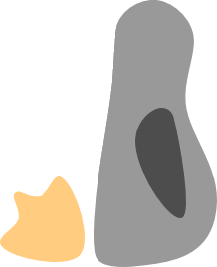ReiserFS on Red Hat 9
I've had occasion to do a lot of Red Hat 9 installs lately. For the record, this applies to Fedora Core 1 and Core 2 as well. The issue is that the Disk Druid has a limited understanding of file system types. It will only let you pick from: EXT2, EXT3, or VFAT. I'm ignoring options for RAID, LVM and swap, of course. The point is that ReiserFS is not an option from the pull-down menu when you edit a partition.The issue here is that most people today want a journaling filesystem. This is especially true for the root (/) partition. Well, Red Hat 9 offers you ext3, which is a nice journaling filesystem, but in my opinion there are better ones. I think the best is ReiserFS. Other theoretical choices are jfs and xfs, but Red Hat doesn't put those on their install CD.
Why does Red Hat ship with the ability to use ReiserFS but not let the Disk Druid guide you there? Beats me. Here's how to get around that limitation.
Put in your Red Hat 9 Disc 1 CD into the CD-ROM drive and boot. Go through the screens where you select your installation language, keyboard style, and mouse type, you get to pick between "Automatic partition" and "Manually partition with Disk Druid".
Before making that choice, press CTRL-ALT-F2. This will take you to a
command line shell. Fire up the fdisk program to
partition your hard disk. Feel free to read the HOWTO
first. You'll probably want to have /dev/hda2 or /dev/hda3 as your
root (/) partition.
After you are done with fdisk and have saved your
partition table, you need a filesystem. Create the ReiserFS
filesystem by typing /usr/sbin/mkreiserfs /dev/hda2 (or
/dev/hda3 as the case may be).
Press CTRL-ALT-F7 to get back to the pre-Disk Druid screen. Go ahead
and select the Disk Druid. The Disk Druid will detect that some of
the partitions are of type=reiserfs. Now edit all the partitions and
assign them to their proper places in the filesystem hierarchy (/,
/boot, /var, /home, etc). Be careful to click on "Leave unchanged"
for those partitions where you already ran mkreiserfs.
It's ok to format any of the other partitions.
Carry on with the rest of your install, safe in the knowledge that you have enterprise-grade data integrity on your critical (ie, root) filesystems.
Share and enjoy!
Copyright 2004 by Hal Eisen
 Built On Linux
Built On Linux